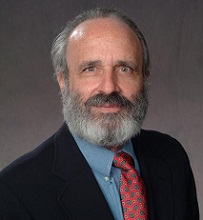 William A. Hyman
William A. Hyman
Professor Emeritus, Biomedical Engineering
Texas A&M University, w-hyman@tamu.edu
Read other articles by this author
The New York State chapter of HiMSS met on June 13th in the unusual setting of a Broadway theater (which, like almost all Broadway theaters wasn’t actually on Broadway). In keeping with the location, the day-long event was designed with a prologue (keynote) plus four acts, each act being a panel discussion on broad topics with what turned out to be overlapping but not overly redundant themes. The meeting recording will become available at the chapter website.
In many ways the topics discussed were familiar, long standing, important and unresolved. One common thread was the difference between data itself (of which we have too much), and data that is usable. Usable here means the right data, delivered to the right person, at the right time, and in the right way. Alert fatigue is our data enemy here even when you tinker with the alert concept, call it a reminder or something else, and manipulate how it appears. Artificial Intelligence was of course raised as the answer to making sense of the data overload. Not raised was my concerns of Artificial Mediocrity if not Artificial Stupidity. An alternative answer is to first determine what we need know and then devise ways to know it, as opposed to generating data and then figuring out what to do with it.
Closely related to the four rights of data is our old friend workflow and it’s still problematic partner the EHR. Notably, some data a clinician might need might be in the EHR somewhere, but finding it remains a problem largely driven by lack of structure. As one speaker noted, EHRs as we know them are bad replications of bad paper records. Not discussed was the practice liability that might arise from failing to act on important data that can be demonstrated to have been “right there in front of you”, especially retrospectively. Also on the data front is user authentication, consent, sharing, and sharing restrictions such as on behavioral health information, even when behavioral health might be important during a subsequent encounter.
Cybersecurity also was discussed during which it was stated that ransomware has been a bigger threat than data theft or malicious tampering. In this regard it was noted that health care in general substantially underspends on computer security compared to other industries. This is partly driven by budgets and partly driven by not understanding the problems or how to address them. In this regard it was pointed out that not having done an adequate risk assessment was a common sight in all major ONC penalty cases. As a medical device person, it was interesting to me to be reminded that in the hospital there are more computers in or associated with medical devices then there are desktops and laptops, and that a $300 desktop typically has better security than a $3 million imaging device. In this regard it is good to remember that “tech” includes actual things in addition to software.
A topic not often raised in tech circles but discussed here was socioeconomic disparities in health and health care and whether and how tech might play a role here. Except for those on the front lines in this battle there is a tendency for us to think that most people are more-or-less like us. Not having tech access, not having car fare to get to a provider, and not even having a home (and an address) are not things that most of us have to deal with. This is of course not a new issue. Thirty years ago, in Houston, I heard providers decrying that they might treat someone with TB and then send them right back into the environment where they got it in the first place.
Old issues such as the above suffer from a phenomenon that I discovered in academia which is that all new initiatives are always infinitely more exciting than anything we are currently doing, even when the current things are important and have needs that still need to be addressed.
One more positive note was in the discussion of expanding applications of telemedicine. This too was tempered with the old problems of reimbursement and inter-state licensing. An oddity here is that a New York patient who happens to be in New Jersey can call their New York cardiologist, but cannot (legally) video chat with them.
And now for my grouchy old man complaint. The number of people in the audience using theirs phones and other devices, more-or-less continuously, was to me extraordinary. Is there no thought that lit screens and busy fingers might be distracting to others? Was what they were doing actually important and necessary to be done right then? Moreover, were they even pretending to be paying attention to the presentations, and if not why were they there? I’m old enough to remember auditorium smoking sections. I now propose an auditorium device user section, say the back 7 rows. Then I can sit forward of those people and pay attention to what I came to hear.
Tune in to our HealthcareNOW Radio for Health IT programming 24/7 
[gallery_carousel style=”modern” visible_items=”4″ total_items=”-1″ category=”radio-lineup” orderby=”rand” order=”DESC” auto_rotate=”yes” animation=”fade-in”]
